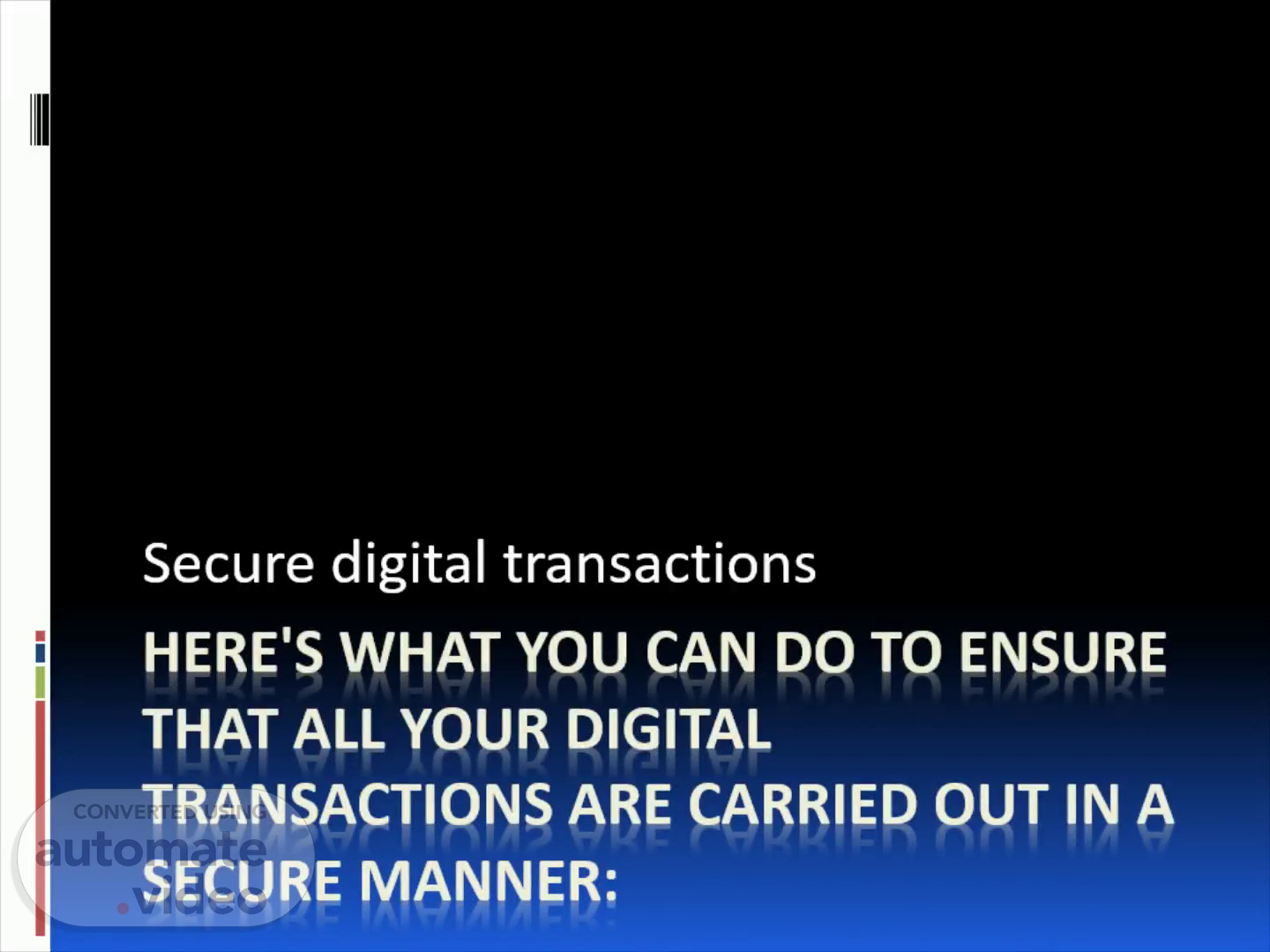
Here's what you can do to ensure that all your digital transactions are carried out in a secure manner:
Scene 1 (0s)
Here's what you can do to ensure that all your digital transactions are carried out in a secure manner:.
Scene 2 (10s)
While this may sound like a basic piece of advice, it is fundamental to building a safe digital transaction ecosystem. Ensure that your passwords for all modes of transactions are different from each other and are not easily decipherable. Avoid using names, birthdays, and other such details for passwords..
Scene 3 (26s)
Don't save card details. Most of us use digital transactions on a daily basis to buy food, clothes and even pay utility bills. In such a situation, it may seem tedious to have to enter your card details in your phone or laptop every day. But it is always recommended to not save your card details and only enter them as and when required to ensure that your financial details are safe in the event that the device falls into wrong hands..
Scene 4 (49s)
Use only private networks. Ensure that you are making all transactions are made over a private network only. A public Wi-Fi network can be susceptible to fraudulent activities and phishing attacks. Transactions made on public networks or devices put you at a higher risk of data theft.
Scene 5 (1m 4s)
Always check your financial statements. Several users often go through their financial statements only once a month. However, this is not a best practice, especially if you are someone who uses digital modes of payment regularly. Ensure that you read through messages that you receive after every payment and make a detailed viewing of your financial statement once a week or more. In case you spot any inconsistencies, raise a ticker or dispute it with the bank or payment platform immediately..
Scene 6 (1m 26s)
Do not share your details. It is imperative that users do not share their financial details over the phone with anyone including those who claim to be working for banks or any other financial institutions. Moreover, it is also advisable to use features like two-factor authentication as well as biometric authentication when possible..